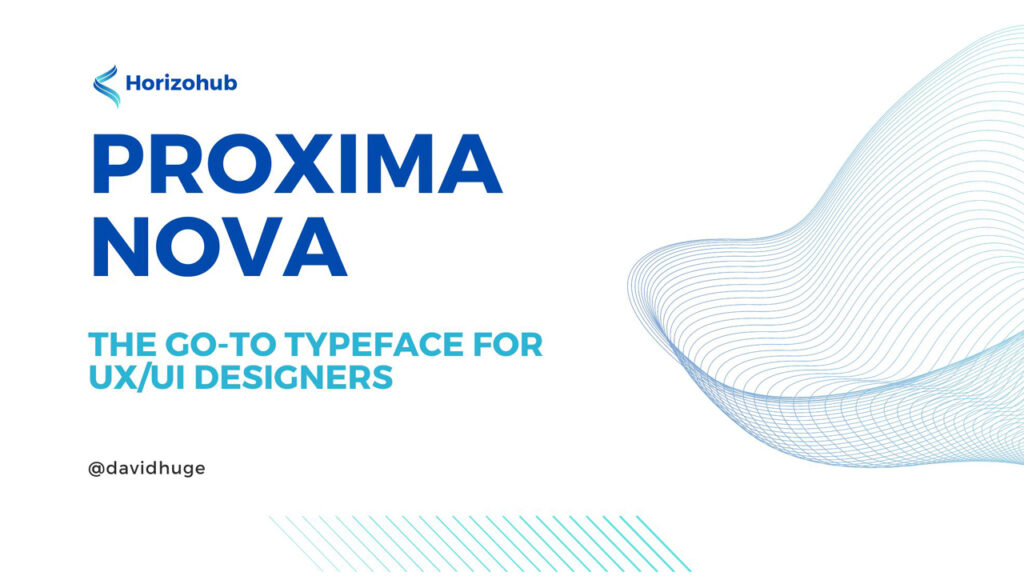Introduction
Proxima Nova can be credited as one of the most frequently used sans-serif typefaces in the works of UX and UI designers in the last ten years. Here, it is possible to observe geometrical proportions, which give the font a clearly modern look, and that is why Proxima Nova is the font of choice for many practitioners when it comes to digital projects.
Key Takeaways
A few key points why Proxima Nova so popular in user interface design:
- Rolling out in 2005, it was aimed at being a new version of Proxima Sans
- Clean, professional and balanced lettering shapes are another strength that can be seen as non-bias.
- Good cleanness and consistency in relation to both volumes and weights
- Used in large scale by brands like BuzzFeed, Dropbox, and YouTube.
- Alternatives include Montserrat, Futura PT, Avenir, Graphik that are available.
- Proxima Nova still stays admissible as a clean and easily-readable UI font
With technology continuing to evolve, Proxima Nova doesn’t seem to have any competitors in the sphere of being a basic UI and UX typeface for a few more years.
Thanks to its adoption of such a versatile and widely-applicable design, it has become business as usual for designers – prepare to continue witnessing its usage dominate new digital products and services.
A Brief History of Proxima Nova
Proxima Nova belongs to the geometric sans-serif typeface family; it was created by Mark Simonson and released in 2005. It originated from the redevelopment of the older Proxima Sans typeface which was also created by Simonson.
Proxima Nova was expected to have lesser fluctuation and look more neutral than the first variant while possessing some aspects of traditional geometric sans serif fonts.
Some key qualities that set Proxima Nova apart are:
- More rounded letterforms
- Lowering of x-height and ascenders
- The most common is the need to make spaces between letters larger.
Simonson cast the type thin to black, and even included a true italic. These characteristics make it possible for Proxima Nova to be used in a variety of user interfaces because of this diversity.
What Makes Proxima Nova Shine in UI/UX Design?
There are several characteristics that make Proxima Nova an excellent choice for digital design projects:
Clean, Modern Aesthetic
- The digital forms make it look modern and with the features of geometry it has a tech essence.
- Low stroke contrast also makes the object appear as if it is not part of the image.
- That is why use of lower case letters is beneficial to readability since they have an open look.
Visual Clarity
- It also helps that there is more space around the elements and that the shapes are not figure-filled.
- The collected weight is diverse and it is easy to differentiate between them.
- It’s true however that true italics permit special stresses without disturbing the continuity.
Technical Flexibility
- Various font weights are suitable to be applied to different user interface elements
- Scales up and down smoothly and functions well at both the macro and micro levels.
- They have gone further in supporting languages than basic Latin alphabets.
- Works well on the screen and on multiple devices.
All in all, I can conclude that Proxima Nova is neat and precise in terms of legibility and alignment across multiple scales, which is highly important for digital interactions.
Usage in Modern Tech Brands and Apps
Proxima Nova experienced a surge in popularity after being used in high-profile technology branding and app design projects, including:
BuzzFeed
- Logo redesign was in 2014 and Proxima Nova was utilized
- Chose it for better modernity and in order for it to be easier to read.
- Utilized to inform BuzzFeed brand and site design
Dropbox
- The logo was redesigned in 2017 by using stylized font of Proxima Nova.
- Expresses how they are easy to understand, effective and can be depended upon
- Present in logo, on the website, in the applications and other printed media.
YouTube
- Web redesign in 2017 implemented Proxima Nova as a typeface
- Cuts a very clean line between many UI items.
- Simplifies the structural properties and general usability of the content with respect to scanning and consumption.
Other brands have also gotten into this across software, electronics, digital services and many other industries. With regard to the typeface, Proxima Nova remains one of the go-to fonts for UI designs.
Alternatives Worth Considering
While Proxima Nova may be the most ubiquitous, there are some alternatives worth considering:
Montserrat
- Also, it has a round being in the middle of the spectrum neutral look.
- Not as bulky as Proxima Nova.
- Produce’s good legibility at small type sizes
Futura PT
- A strong geometric alternative is a good opportunity for the group to show that it is capable of creating a design that does not resemble any of the previous work of the designers.
- A bit more complex and has more retro appeal.
- Ideal for use in specific, loud typesetting
Avenir
- Whether you need a workhorse for your text-heavy designs or a friendly face for your more decorative projects, a modern, neutral sans serif such as Proxima
- Slightly narrower vertically with closer packing
- Features a particularly attractive oblique quality
Graphik
- Presents such characteristics of clarity as Proxima Nova.
- They are extremely versatile and offer high font legibility.
- This is a weakness because it means it can be very restrictive in terms of available ui options, specifically, it does not support italic styles.
Concerning the typeface selection, one should identify the specific needs of the digital product. However, Proxima Nova still stands as a good base for all your UI/UX design projects.
Conclusion
Specificity, readability, and its more contemporary appearance have led to its being adopted by many UX/UI designers, including myself. The thickness of typeface and its range of applicability allows for its use in identifying and labeling different interfaces, be it applications for portable devices, web, or software applications. The transitions between digital and physical media are smooth with Proxima Nova as it is equally effective on the digital platform and when printed. While some designers believe that it has been recently abused, they need to remember that Proxima Nova is usable, and functional, which is why it is used so often. So for the UX/UI teams still in hunt to find an appropriate modern and clean looking sans-serif typeface that works efficiently on the screens and prototypes, Proxima Nova is an ideal choice.



